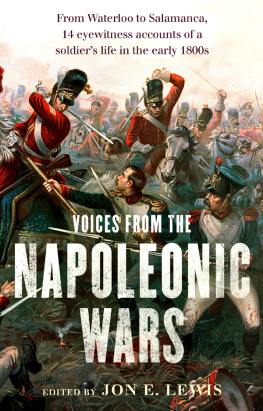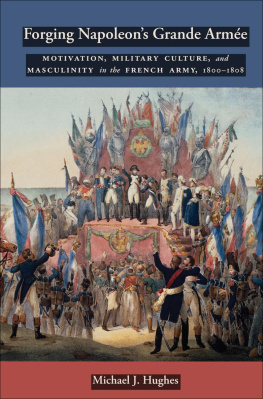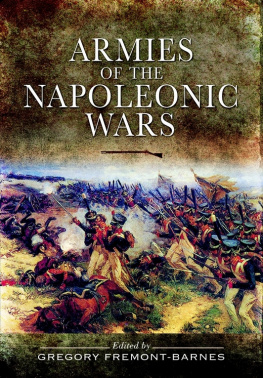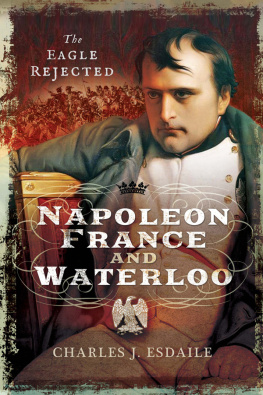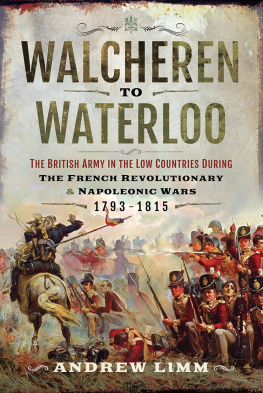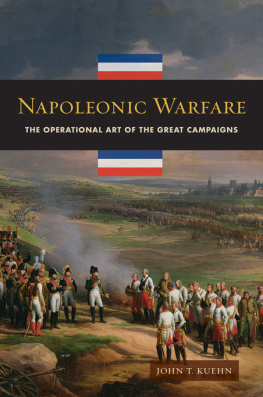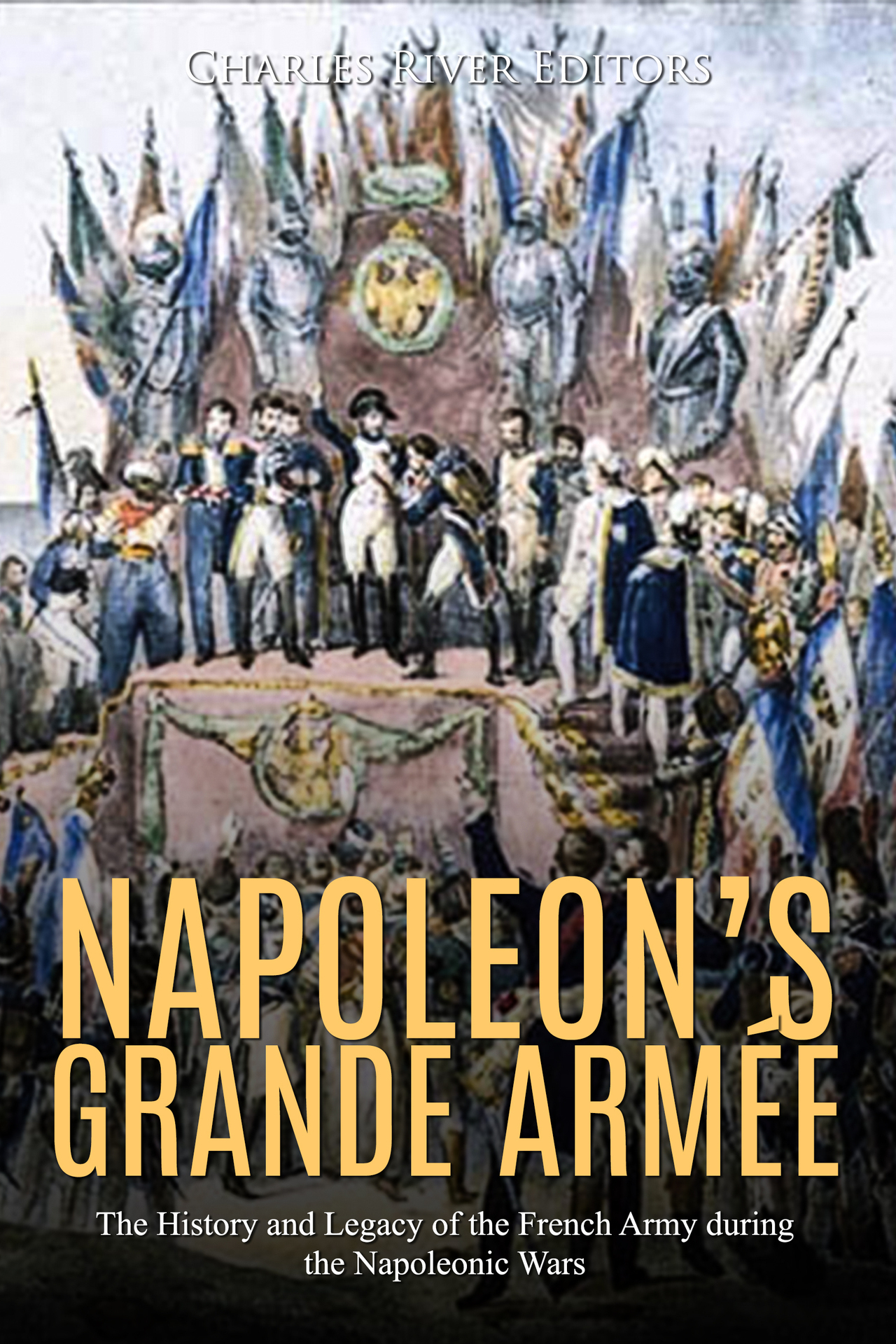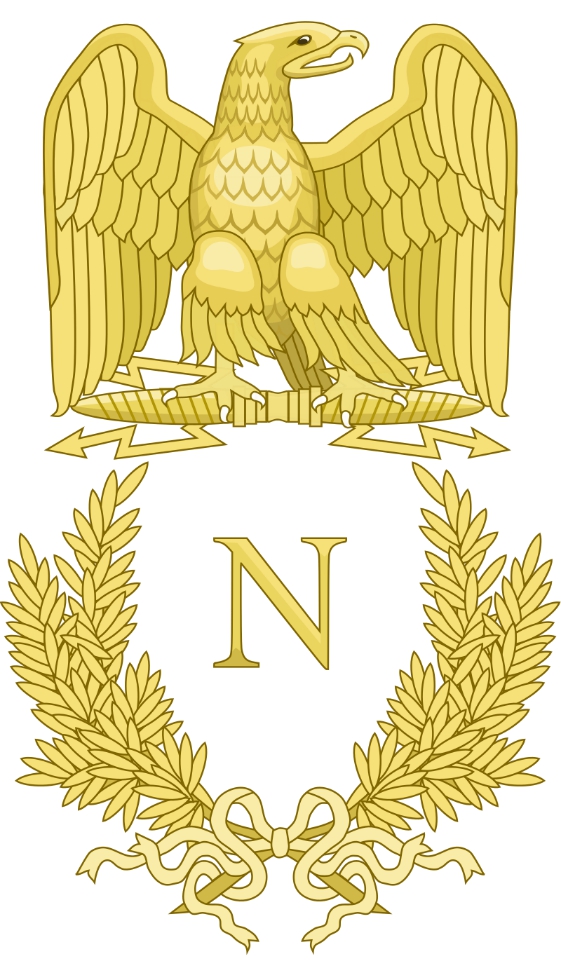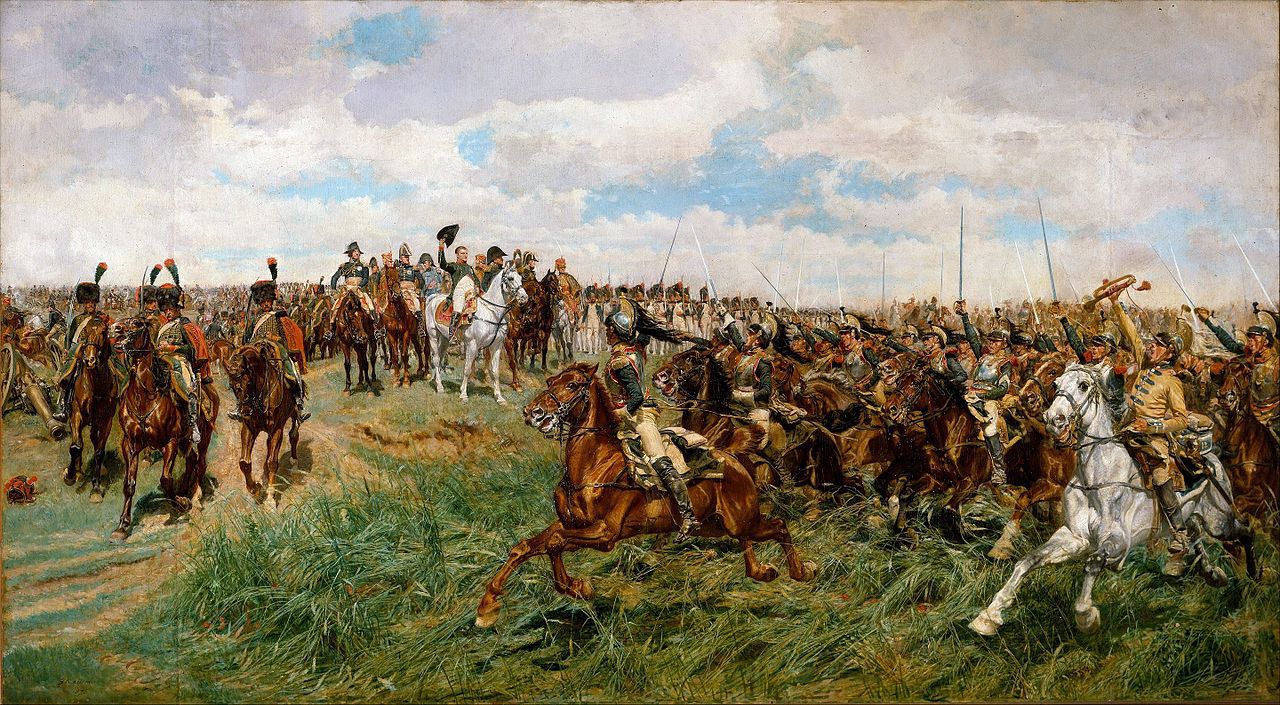Napoleons Grande Arme: The History and Legacy of the French Army during the Napoleonic Wars
By Charles River Editors
Napoleons emblem
About Charles River Editors
Charles River Editors is a boutique digital publishing company, specializing in bringing history back to life with educational and engaging books on a wide range of topics. Keep up to date with our new and free offerings with this 5 second sign up on our weekly mailing list, and visit Our Kindle Author Page to see other recently published Kindle titles.
We make these books for you and always want to know our readers opinions, so we encourage you to leave reviews and look forward to publishing new and exciting titles each week.
Introduction
A painting of French Cuirassiers at the Battle of Friedland
"One sharp blow and the war is over." Napoleon during the Battle of Austerlitz
Nearly 50 years after Napoleon met his Waterloo, generals across the West continued to study his tactics and engage their armies the same way armies fought during the Napoleonic Era. Despite advances in military technology and the advent of railroads for transportation, all of which made defensive warfare more effective, acclaimed military geniuses like Robert E. Lee used flank attacks and infantry charges against superior numbers in an effort to win decisive victories, and it would not be until World War I that concepts of modern warfare made the Napoleonic Era of the early 19th century outdated.
For those questioning why generals continued using tactics from the Napoleonic Era even as technology changed the battlefield, the Battle of Austerlitz may provide the best answer. Napoleon is regarded as one of historys greatest generals, and Austerlitz was his greatest victory. In 1805, Britain, Austria, and Russia allied together to form the Third Coalition against the French, and the Third Coalitions forces consisted of armies from Austria and Russia, with Britain providing naval support as well as its financial powers. Napoleon had already defeated and mostly destroyed an Austrian army in October at Ulm before it could link up with the Russians, setting the stage for the Battle of Austerlitz to be the culmination of the war against the Third Coalition as a whole in early December. Despite the smashing victory at Ulm, Napoleons French army would still be well outnumbered at Austerlitz by a joint Russo-Austrian army in a battle that would also come to be known as the Battle of Three Emperors.
The Battle of Austerlitz was a tactical masterpiece that saw Napoleon actually invite an attack on his army by the bigger Coalition army, and over the course of about 9 hours, the French successfully defended their right flank while counterattacking in the center and splitting the Russo-Austrian army in two, allowing the French to hit the flank of the advancing left wing of the enemy. The result was a decisive victory that virtually annihilated the Third Coalitions army and made Napoleon the master of the European continent.
The influence Austerlitz had on Europes political and military situation cannot be overstated. The Third Coalitions defeat led to the dissolution of the Habsburg Empire, allowed France to redraw the map of Central Europe, and ultimately put into place the chain of events that would lead to Frances subsequent wars. Furthermore, Austerlitz set the model that every general hoped to emulate in battle, and the results were undoubtedly on Napoleons mind when he tried to use the same movement strategies in an attempt to keep Prussian and British armies from linking together at the Battle of Waterloo nearly 10 years after Austerlitz.
Napoleons enemies would famously say he was worth 50,000 men in the field, but the simple truth is he wasnt able to dominate Europe on his own. In fact, the subordinates and soldiers underneath him participated in several of historys most famous battles and charted the course of Napoleons rise and fall.
The French army which became known as the Grande Arme existed for just 10 years, from 1805 1815, and the question of what it was about this army that allowed it to win so many notable victories and to survive defeats which would have destroyed lesser armies has fascinated historians and writers ever since. After all, in terms of equipment, weapons, and battlefield tactics, there was little to distinguish the Grande Arme from other European armies in the early 1800s, but in battles such as Austerlitz (1805), Jena-Auerstedt (1806) and Wagram (1809) it won stunning victories, often against numerically superior enemies. No single factor can account for these victories, which could be attributed to a combination of high morale, a truly egalitarian approach to promotion from the ranks, a radical army organization, and the inspired leadership of Napoleon, all of which combined to make the Grande Arme virtually unbeatable for the first few years of its existence.
At the same time, Napoleon and his Grande Armes most famous campaigns were the ones that ended in defeat. During the disastrous invasion of Russia in 1812, the Grande Arme suffered catastrophic losses retreating from Moscow, and while its numbers were replenished with new conscripts, the invincibility of the Grande Arme was gone forever. From 1813 until its final destruction in June 1815 at Waterloo, the Grande Arme would win a few more victories, but ultimately it would never recover the power and prestige it possessed before the invasion of Russia. These factors set the stage for the second setback, which essentially sealed the fate of Napoleon's empire. The four-day Battle of Leipzig in October 1813, romantically but accurately dubbed the "Battle of the Nations," proved the decisive encounter of the War of the Sixth Coalition and essentially determined the course the Napoleonic Wars took from that moment forward. The resultant collision was the single largest field action of the Napoleonic Wars, dwarfing Waterloo in size, complexity, and overall importance. The Battle of Leipzig was probably the combat which involved the highest concentration of men on a single extended battlefield on the planet up to that point in history, and it would not be exceeded until the vast struggles of the First World War almost a century later.
As noteworthy as those battles all were, Waterloo is the most famous battle in modern history if not all of history, and appropriately so. Gathering an army of 100,000 men, Napoleon marched into what is now Belgium, intent on driving his force between the advancing British army under the Duke of Wellington and the Prussian forces under Marshal Blucher. It was the kind of daring strategy that only Napoleon could pull off, as he had at places like Jena and Austerlitz. At Waterloo, however, it would end disastrously, as Napoleons armies were unable to dislodge Wellington and unable to keep the Prussians from linking up with the British. The battle would end with the French suffering nearly 60% casualties, the end of Napoleons reign, and the restructuring of the European map. Simply put, the next 200 years of European history can be traced back to the result of the battle that day in 1815.








